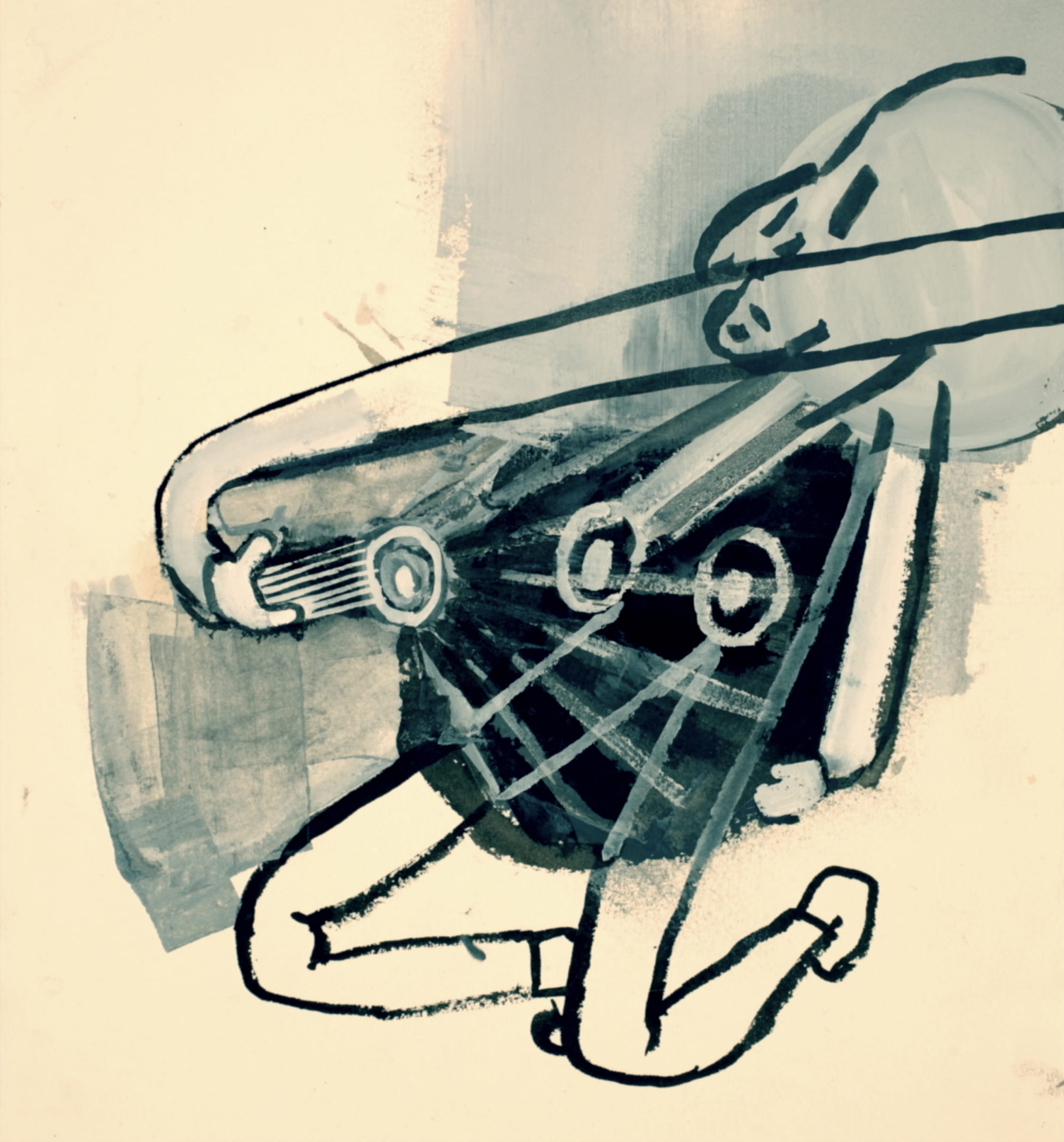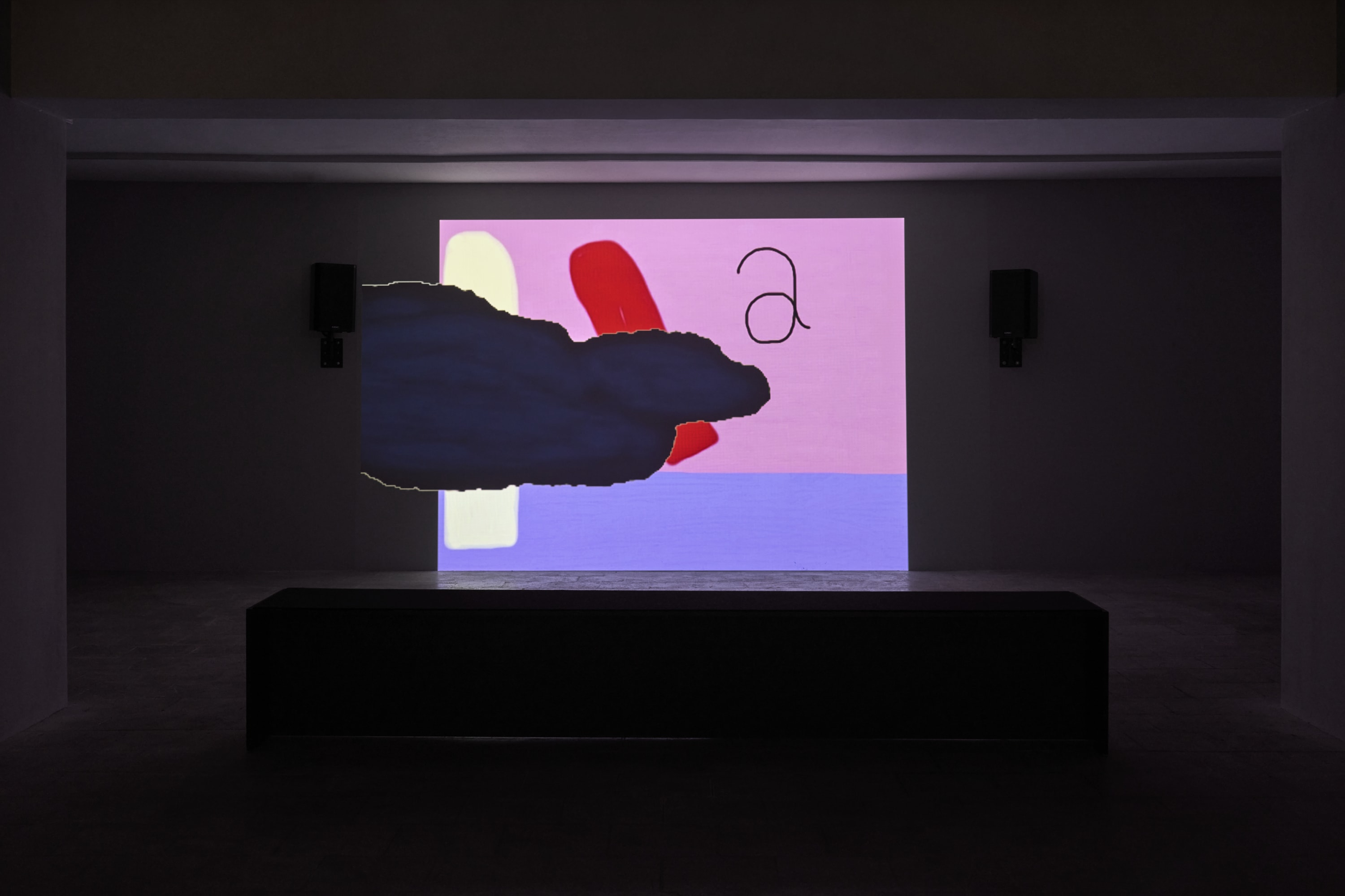Amy Sillman (with Marina Rosenfeld, sound) : Minute Cinema: 4 videos for 4 seasons
Lower Exhibition Space
-
Overview
Amy Sillman began experimenting with handmade animation in the early 2010s as a way to further extend her practice, which had already expanded to zine-making in 2009. Her short digital videos, often made by scanning or photographing drawings and painting fragments, then sequencing them frame by frame, create a sense of restless transformation. These works occupy a fascinating space between painting, drawing, and the moving image. They feel intimate and provisional, like notes or thoughts caught in motion. Sillman has described animation as “drawing that moves”, and her videos indeed retain the tactile, handmade quality of her studio process.
Minute Cinema: 4 videos for 4 seasons (2024–25) was commissioned by The Washington Post, which invited Sillman to create an artwork and write a column once per season for a year. In the politically charged year leading up to the election, she proposed a project deliberately “out of sync” with the expectations of a major newspaper and its readership: a one-minute animation for each season, each with a distinct mood. She invited composer and artist Marina Rosenfeld to collaborate on the sound. The first animation, Abstraction as Ruin (Spring), was followed by Abstraction as Apprehension (Summer) and Abstraction as X-Ray (Fall). The final fourth video did not appear in the Washington Post, but Sillman and Rosenfeld completed the cycle with Abstraction as Insomnia (Winter) made specifically for this exhibition.
The four works extend Sillman’s long-standing dialogue between painting, drawing, and movement into a cyclical meditation on time, perception, and emotional weather. Each short animation translates her gestural vocabulary of figures, marks, and color fields that continuously dissolve and re-form into motion. Rather than illustrating the seasons literally, the series uses them as metaphors for psychic and social states: renewal, collapse, hesitation, and recovery. Hand-drawn frames compose short bursts of unstable forms, set to Rosenfeld’s layered sound, which ranges from slapstick to dissonance. The humor and absurdity of the animations carry a political undertone, an insistence that abstraction and awkwardness might still serve as tools of survival in the face of collective crisis.
As figures fumble their way into abstraction, accompanied by improvised soundtracks and fragments of conversation, the comic deepens into an inquiry into emotion and perception: how does an image convey a feeling that changes before it can be fixed? In this sense, Sillman’s videos extend the psychological and philosophical concerns of her painting – about embodiment, intimacy, and uncertainty – into the temporal dimension of film.
Rosenfeld’s sound design, shifting between resonance and stillness, amplifies this sense of precarious interiority, of breathing through instability. Across the cycle, Sillman turns animation into a time-based analog of painting: a process of perpetual becoming rather than depiction. Her seasonal videos are not simply about nature’s rhythms but about the mutable, vulnerable conditions of consciousness itself – how thought, emotion, and form continually break down and regenerate in the shared air we breathe.
Amy Sillman’s recent retrospective exhibition took place at Kunstmuseum Bern and Ludwig Forum, Aachen. A comprehensive presentation of paintings on paper by the artist was on view in the exhibition The Milk of Dreams, curated by Cecilia Alemani at the 59th Biennale di Venezia. Sillman has held solo exhibitions at major international institutions, most recently at the Arts Club of Chicago; The Camden Arts Center, London, and Kunsthaus Bregenz, as well as group shows at the Lenbachhaus, Munich; Whitney Museum of American Art, New York; Tate Modern, London, and MoMA, New York. Her work can be found in the permanent collections of the MoMA, New York; Whitney Museum of American Art, New York; Tate Modern, London; Musée d’Art Moderne, Paris; Morderna Museet, Stockholm; Museum of Fine Arts, Boston; Art Institute of Chicago; Hammer Museum, Los Angeles; Museum Brandhorst, Munich, and many more.
Marina Rosenfeld is a composer and artist based in New York and Berlin. Working across the disciplinary boundaries of music, performance and improvisation, video, sculpture and other visual forms, her works have interrogated the fundamental conditions of sound and music since the 1990s. Institutional solo presentations include the Park Avenue Armory, Portikus, the Museum of Modern Art, The Artists Institute (NY), the Serralves Museum, Kunsthaus Baselland, the 2024 Gwangju Biennial, the 2001 and 2008 Whitney Biennials, the 2016 Montreal Biennial, the radio program of Documenta 14, and many others throughout Europe, North and South America, Asia and Australia. As a musician, she has performed with the Merce Cunningham Company, Warrior Queen, Sonic Youth, Christian Marclay and George Lewis, among many others. She is the recipient of the 2024 Alpert Award in Visual Art, and was a 2024 Artist in Residence at La Becque, Switzerland and the Emily Harvey Foundation in Venice, Italy. She is currently a 2025 fellow of the DAAD in Berlin, in Arts and Media.
-

Amy Sillman (with Marina Rosenfeld, sound)
Minute Cinema: 4 videos for 4 seasons, 2024–2025Single-channel video, 5:05 min, color, sound
Edition of 6 + 1 AP

